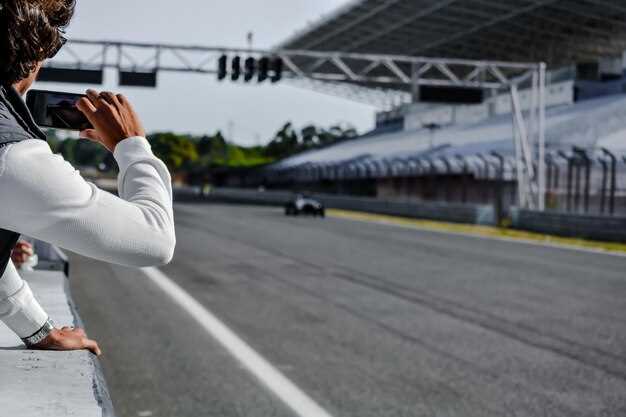
Racing is an exhilarating sport that demands precision, skill, and the ability to make split-second decisions. For beginner drivers, the learning curve can be steep, and mistakes can be costly–not just in terms of time, but also in safety. Understanding these common missteps can significantly enhance performance and enjoyment on the track.
One of the most frequent errors made by new racers is underestimating the importance of car control. Many beginners focus solely on speed, neglecting the crucial aspects of handling and braking. Tips on proper throttle control and steering techniques can make a profound difference, allowing drivers to navigate the course more effectively.
Additionally, new drivers often fail to recognize the significance of track awareness. Understanding the layout and conditions of the track is essential for strategic racing. Ignoring this can lead to poor decision-making during critical moments. Implementing simple tips for improving track awareness can help beginners avoid common pitfalls and enhance their overall racing experience.
Overbraking: Understanding Your Vehicle’s Limits
One of the most common errors beginner racers make is overbraking, which happens when a driver applies excessive pressure to the brakes. This can lead to loss of control, increased tire wear, and longer lap times. To prevent this mistake, it’s crucial to understand your vehicle’s limits and braking capabilities.
Know Your Vehicle: Different cars have varying braking performance. Familiarize yourself with your vehicle’s weight, brake size, and overall dynamics. Each vehicle responds differently under heavy braking, so spend time understanding how it behaves in various conditions.
Practice Threshold Braking: Threshold braking is the optimal technique of applying maximum brake force without locking the wheels. This skill allows a driver to maintain control while decelerating more effectively. Practice this technique consistently to become familiar with how much pressure your brakes can handle before losing grip.
Brake Early and Smoothly: Many novice drivers tend to wait too long to brake, leading to abrupt and harsh actions. Instead, brake earlier than you think is necessary and apply pressure smoothly. This approach gives you better control and can prevent overbraking, making your turns more efficient.
Monitor Tire Conditions: Tires play a crucial role in braking performance. Regularly check your tire pressure and tread depth to ensure optimal grip. Worn or improperly inflated tires can alter how your vehicle responds to braking, increasing the chances of overbraking.
Feedback and Adjustments: After each race or practice session, reflect on your braking technique. Consider keeping a log to note where you tend to overbrake. This feedback can help you adjust your approach in future races, improving your overall driving skills.
By actively working to understand your vehicle’s braking limits and applying these tips, you can significantly reduce the risk of overbraking. Developing good habits early on will enhance your racing performance and lead to a safer driving experience on the track.
Ignoring Line Selection: Mastering Track Layout for Speed

One of the most significant errors novice racers make on the track is neglecting the importance of line selection. A racetrack is designed with multiple turns, straights, and elevation changes, each of which requires a specific approach for optimal speed. Understanding and mastering the ideal racing line is crucial for enhancing performance.
The racing line is the path that allows the driver to maintain the highest speed through a corner while minimizing braking and accelerating. By consistently applying the correct line, a driver can achieve better lap times and overall control of the vehicle. However, many beginners often stray from this line, which leads to compromised performance and potential accidents.
To improve line selection, drivers should study the track layout before racing. Familiarity with each turn’s angle, curvature, and length allows for better planning in how to enter and exit. Using visual aids, such as track maps and onboard footage, can provide valuable insights into where to position the car.
Additionally, practicing with a focus on line selection during training sessions is vital. It’s not just about speed; balance and precision in cornering can significantly impact overall lap times. A driver must learn to anticipate the correct trajectory, considering factors such as braking points and throttle application.
Finally, it’s important to remain adaptable. Conditions on the track can fluctuate due to weather or tire wear, so a successful driver continually assesses and adjusts their line selection. By prioritizing this aspect of racing, drivers can significantly reduce errors and improve their overall racing skills.
Failure to Adapt: Adjusting Driving Style to Track Conditions

One of the most critical yet common errors beginner racers make is the failure to adapt their driving style to changing track conditions. Understanding the nuances of the track is essential for optimal performance. Below are insights and tips to help drivers recognize and respond to these conditions effectively.
Factors influencing track conditions include:
- Weather changes, such as rain or temperature fluctuations.
- Track surface alterations, including wear, rubber buildup, or debris.
- Time of day, affecting light conditions and visibility.
Not adjusting to these conditions can lead to decreased performance, increased lap times, and a higher likelihood of accidents. Here are some tips for drivers to consider:
- Stay Observant: Always pay attention to the track surface and weather. Use practice sessions to assess conditions.
- Modify Tire Pressure: Different conditions may require adjustments in tire pressure to maintain grip and control.
- Change Line: Experiment with different racing lines as the track evolves, especially in corners where grip may vary.
- Adjust Brake Points: In slippery conditions, it may be necessary to change your braking techniques and distances.
- Throttle Control: Use smooth throttle applications to prevent wheel spin on wet or loose surfaces.
Ultimately, a successful driver must be flexible and responsive to the dynamic nature of the track. Failing to adapt not only hampers performance but can also compromise safety. By heeding these tips and maintaining a keen awareness of track conditions, beginner racers can significantly improve their competitive edge.






